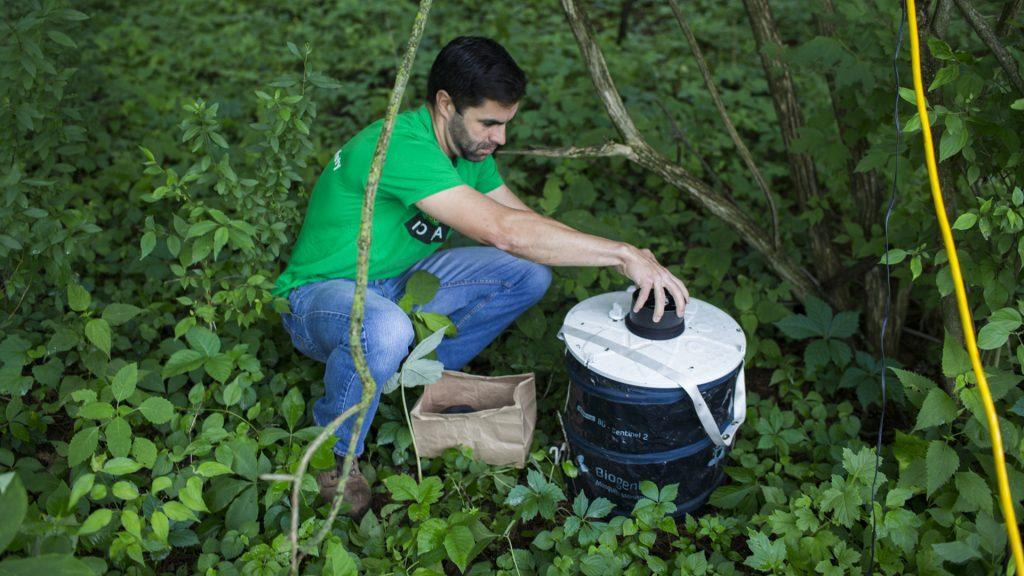Johnson County is surveying the area mosquito population for a second summer, looking for disease-carrying species in light of recent reports from the Centers for Disease Control & Prevention on insect-borne illnesses.
“We want to notice the spread of new species of mosquitoes to areas that they haven’t been before,” said James Lacina, the environmental health manager for the county Public Health Department.
The program started approximately 32 years ago, he said, but it went on hiatus for many years until the Iowa Department of Public Health approached the county last year to restart it.
So environmental health staff collect mosquitoes from seven trap sites around the county. Located in human-populated areas including Lake Macbride State Park near Solon and City Park, the traps are placed near ideal mosquito habitats and nesting grounds, under trees or near standing water.
The county sends the samples to the Iowa State Medical Entomology Lab, where researchers identify the species. The State Hygienic Laboratory in Coralville then tests the potentially dangerous mosquitoes for such infections as West Nile virus and Zika virus.
Though Iowa does not expect to find anything as serious as Zika this year, new mosquito species have been found in the state in recent years. Potential exists for something dangerous to make its way here some day.
“That’s the idea behind this,” Lacina said. “If we’re able to find them, we can warn people well in advance to take the precautions that they need to avoid insect bites.”
The CDC reported May 1 that reported illnesses from mosquito, flea, and tick bites tripled from 2004 to 2016. Nine new insect-borne illnesses emerged in the U.S. during that time as well.
Emerging diseases are those that have not been reported at all or not reported for many years in an area. UI Associate Professor of epidemiology Christine Petersen said 75 to 85 percent of emerging diseases are zoonotic, meaning they can be transmitted between animals and people.
“It just so happens that one of the easier ways for that to happen, to move between people and animals, is via what’s called a vector, and common vectors are insects like mosquitoes,” she said.
Ryan Smith, an Iowa State associate professor of entomology, said that when insects bite infected animals, they can pick up viruses that can be transferred to other animals through subsequent bites.
Petersen said Iowa is lucky, because its harsh winters are uninhabitable for more dangerous mosquito species, which prefer tropical locations.
“In terms of tick-borne diseases, we are not so lucky, and in fact, we are lucky in a bad way because we are sitting between two different zones, and they’re seeming to more and more overlap,” she said.
Deer ticks from the north and Lone Star ticks from Missouri are both found in Iowa. The CDC reported 232 cases of Lyme disease, mainly transmitted by ticks, in Iowa in 2016, up 239 percent from 2006.
Petersen and Smith largely attributed the increase in emerging and insect-borne diseases to globalization of people and trade. Transportation vessels such as planes and ships carry insects as well as people and goods from one location to another, bringing tropical species to places such as the Midwest.
Environmental changes also allow insects and humans to come into contact when previously they did not.
“We are getting more people on the planet, and because of that, we’re moving into areas where we haven’t lived before,” Petersen said. “We’re clearing forests, and we’re changing ecologies, and that has us run into vectors that are infected with new things.”
Protect yourself from Lyme disease and other insect-borne illnesses this summer. Johnson County’s environmental health director says these are the easiest ways to do it:
· Use insect repellent
· Cover up with long pants and sleeves in heavily wooded areas
· Eliminate standing water, used as mosquito breeding habitat



